Chinese plate eel yellow fond famille verte decor Kangxi
Ø 22.5 cm
€ 200,00
Prijs incl. 6% BTW & Verzendingskosten
Out of stock
Meer informatie
Presented is a small round Chinese porcelain plate that is decorated in polychrome. On a milky white covering a stock color in eel yellow skin color has been applied. This is a hand-painted decor brushed in a famille verte palette. Flat, platform and board are individually decorated. In the center we see an angular stone wall that gives onto a pagoda with a slightly dirty yellow and turquoise color. In the front we see a teacher on a horse, preceded by a student on foot who carries the master’s work material. In the center of the board, to the left of the wall, there is a rectangular table with a flower vase, paint pot with brushes and notebooks. At the top left a symbol of wisdom is painted separately, including paper rolls. Let us point out that a European perspective is completely lacking. The elevation is bordered by a frieze of green ruji-like motifs. The flat oblique border has four cartouches outlined in green, each with a lotus plant, twice painted in overglaze blue and twice painted in gold. In between we see four separate emblems with a vase, handle basket, paper rolls and a brush pot on a four-legged bench. The enamel colors used are blue, yellow, green, iron red, purple, brown, black and gold. The back, except for the footring, is covered with the same eel yellow color as the front. On the border there are three branches with leaves and flowers painted. In the center of the base the plate is painted in blue overglaze between two concentric blue lines with the symbol of the incense burner on four legs, the so-called Ding. The use of an eel yellow skin color as stock was not applied until after 1683 and a European perspective can be seen at the earliest from 1715 with the arrival of Father Castiglione. The use of turquoise is an outgrowth of the late Ming dynasty. This means that this sign may have to be situated around 1690-1700.
Condition: minimal chip on the edge, several chips on the base ring at the bottom, otherwise very good status.
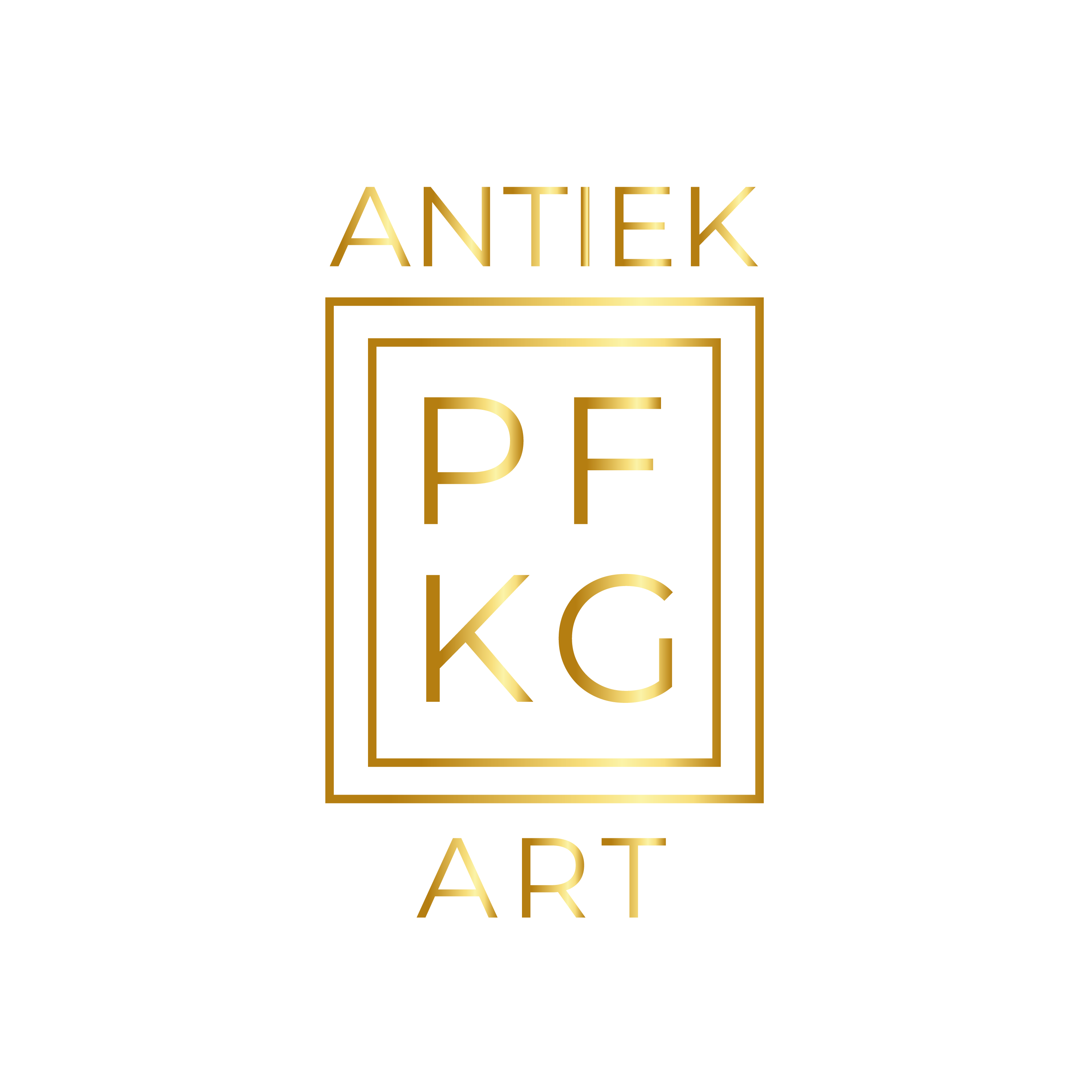



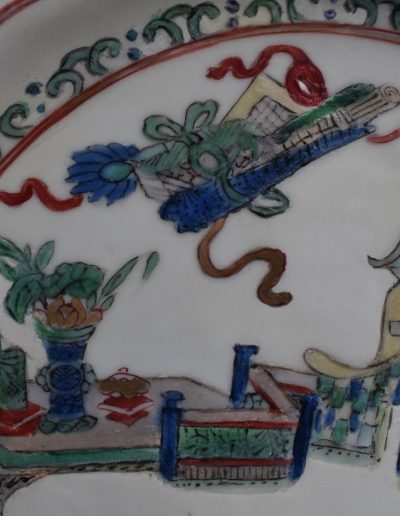
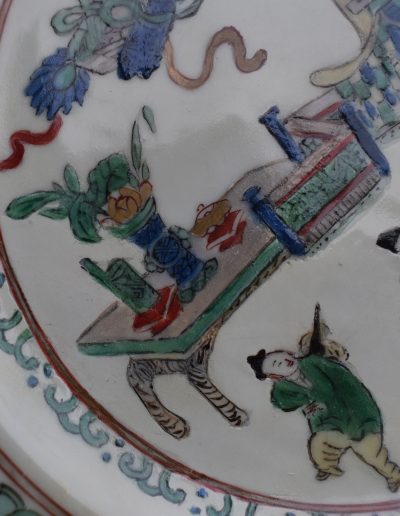
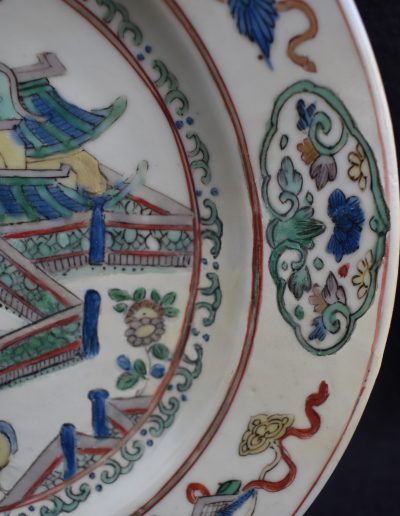


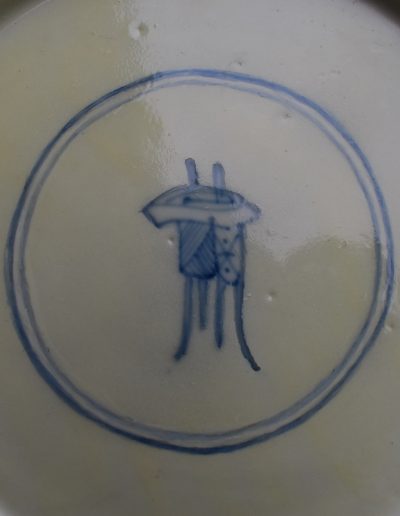
Reviews